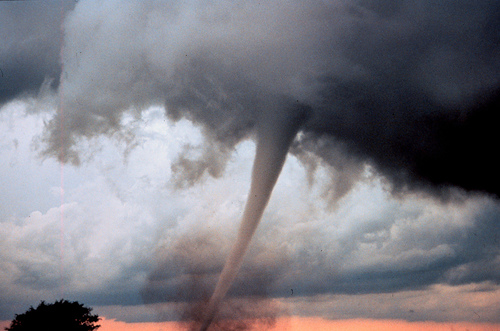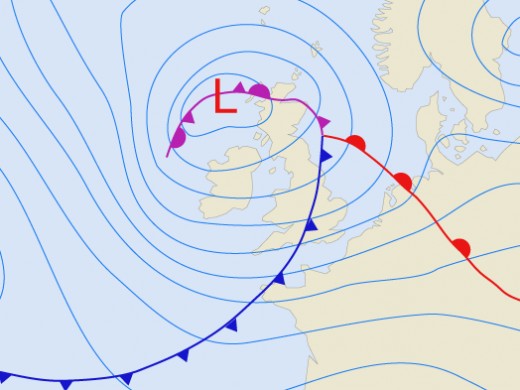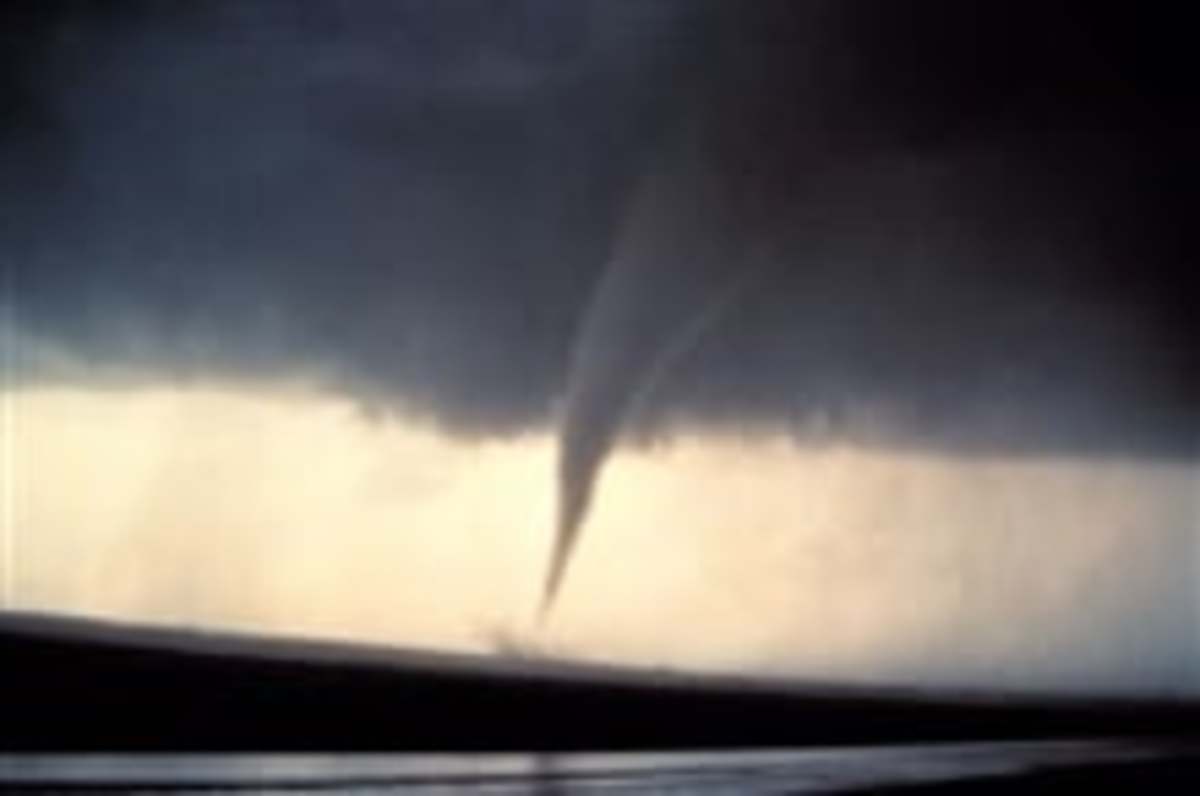Tornado Facts, What Causes Them?

tornadoes
Tornadoes are nature’s most violent storms; having destructive winds in excess of 250 mph they can destroy anything in their path. Tornadoes are fascinating to watch and will almost mesmerize you like watching a fire, but they can be extremely dangerous to watch from close range. The wind speed of the tornado determines how the tornado is rated on the Fujita scale or EF scale.
EF-0 65-85 mph winds EF-1 86-110 mph winds
EF-2 111-135 mph winds EF-3 136-165 mph winds
EF-4 166-200 mph winds EF-5 over 200 mph winds.
Luckily over 95 % of all tornadoes are EF-2 or lower. Not that an EF-2 can’t do significant damage but people seldom die from EF-2 tornadoes, and the property damage is normally very isolated and light.
United States
The United States has by far the most tornadoes of anywhere in the world although they have occurred on every continent but Antarctica. The United States gets between 1000 and 1400 tornadoes per year on average. The highest risk areas in the United States are in the southern and middle plains states of Texas, Oklahoma, Nebraska, Kansas, Iowa, Missouri, Mississippi, Alabama, Georgia and southern Illinois. The highest risk cities in the country are Oklahoma City, Huntsville, Topeka, and Tulsa.
Europe
Europe gets some tornadoes but they are not as frequent and not normally as strong. Because Europe does not have a large flat area with humid air clashing with colder air, tornadoes are not as likely. The U.K has the most tornadoes in Europe and gets between 33 and 50 tornadoes per year; most of them are weak and do little damage. Germany gets an EF-5 tornado every 150 years and an EF-3 tornado every 40 to 50 years.

The optimum conditions to create a tornado is a warm front moving northeast with a cold front trailing behind it, the area inside the upside down V is the most likely area for tornadoes to form. In the picture to the right, it is the area between the blue line (cold front) and the red line (warm front).
This is a very simplified explanation of how tornadoes form. As the warm humid air moves north and runs into the cooler drier air it creates a rotation horizontally in the air, this forms clouds and a thunderstorm. As more and more of the warm humid air is pulled up into the thunderstorm the area of rotation is pushed to a vertical position which causes the whole thunderstorm to start to rotate. Many times the rotation stays in the thunderstorm and does not come down to the ground. When the rotation gets fast enough it moves down to the ground, and a tornado is born.
Science behind tornadoes
Tornadoes will generally come out of the southwest part of the thunderstorm cell and will move horizontally along the ground at the speed of the movement of the thunderstorm, this can vary greatly from 10 mph to over 60 mph. A tornado can be behind the rain part of the storm or sometimes in the rain part of the storm, the ones that are in the rain are more dangerous because you can’t see them coming when hidden by rain.
Tornadoes can range in size on the ground from a couple of feet wide to over 1 mile wide. The smaller ones can jump around and may not move in a strait line which makes them harder to know where they are going to go, the big ones are easier to track but unfortunately are much more dangerous.
These storms are very dangerous and can drop down right above you with no warning so if you are in the right conditions you should stay aware of the conditions around you and take cover to keep safe if conditions change. They are fascinating storms and are somewhat mesmerizing like fire, but don’t get close, debris from a tornado can come back down miles away from the storm and can severely injure you.
Other Good Reading
What are earthquakes An earthquake is the sudden and sometimes very violent release of energy from the movement of the earth surface.
End of the world Will Dec. 21 2012 be the end of the world? There have been a lot of discussion on this topic. There are a lot of end of the world predictions and arguments saying that the world is going to end on this day.
Interesting earth facts This is a collection of interesting facts about the earth and interesting details about the Earth.








